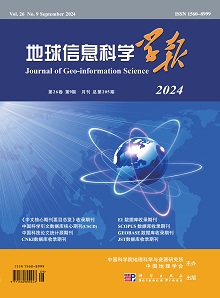野外考古中地层与剖面的数据集成
引用次数: 0
摘要
中国传统的野外考古以人工方法为主,野外资料主要是分层地层和遗迹剖面图。在原始地形和剖面数据的基础上,分析了现有记录方法的特点,总结了野外考古数据集成对快速制图和现场场景三维重建的需求。采用面向对象的方法,研究了野外考古空间数据的整合规律,设计并完成了原始地形图和剖面图的统一坐标基准(重点是基于分层地形图和地层与遗迹剖面图以及矩形单元分布图的二维数据在统一坐标系下转化为三维数据),以及基于GIS的分层地形图与地层剖面图的拼接和综合地形图。提出了地层剖面数据与地层剖面数据的整合方法,将地层剖面整合成拼接图(重点是根据地层拓扑关系和地层属性信息构成地层陷洞掐出的统一规则),将矩形单元的分层平面图堆叠成集成平面图(关键问题是基于考古标准和空间的整合规则和方法)通过GIS软件对遗址内考古对象的关系进行补充),并将遗址的平面图和剖面整合成一幅遗址综合平面图的拼接图。最后,实际挖掘地图数据,即以湖南省李县八石塘遗址为例,对上述方法进行了试验。通过与原始手工整合图的对比,结果表明,本文方法为快速制图、考古报告和文化遗址现场三维重建提供了有效、准确的方法,是现场考古中分析研究堆积物与遗迹时空关系的辅助决策工具。本文章由计算机程序翻译,如有差异,请以英文原文为准。
Data Integration of Ichnography and Profile in Field Archaeology
Traditional field archaeology in China is based on manual method and the main field data are delaminated ichnography and profile map of stratum and relic.Based on the original ichnography and profile data,the character of the current record method had been analyzed and the demand of data integration in field archaeology for rapid mapping and field scene 3D reconstruction had been summarized in this paper.With the object-oriented approach,we had studied the integration rules of spatial data in field archaeology,designed and completed the united coordinate datum of the original ichnography and profile maps(the keystone was transforming the 2D data to 3D one in a united coordinate system based on delaminated ichnography and profile map of stratum and relic and distributing map of rectangular units),the stitching of stratum profiles and integrated ichnography from delaminated ones based on GIS.Moreover,we had put forward an integration method of ichnography and profile data,with the stratum profiles integrated to a stitching map(the key point was constituting uniform rules for pinch-out of stratum lacunae based on the topological relation and the attribute information of the stratum) and delaminated ichnographies of rectangular unit piled up to an integrated ichnography(the key question was the integration regulation and methods based on the archaeological criterion and he spatial relations of the archaeological objects in a site and complement by GIS software),and ichnography and profile of relic integrated to a stitching map of integrated ichnography of relic.Finally,the real excavation map data,i.e.Bashidang Site,Li County of Hunan Province were used to test the above proposed method.Through comparing with the original manual integrating map the results showed that the method in this paper provided a valid and precisely faithful way for rapid mapping,archaeological report,and basic data for cultural site scene 3D reconstruction and proved to be an assistant decision tool for analyzing and studying the spatio-temporal relation of the accumulation and the vestiges in field archaeology.
求助全文
通过发布文献求助,成功后即可免费获取论文全文。
去求助
来源期刊
CiteScore
2.70
自引率
0.00%
发文量
3757
期刊介绍:
Journal of Geo-Information Science is an academic journal under the supervision of Chinese Academy of Sciences, jointly sponsored by Institute of Geographic Sciences and Resources, Chinese Academy of Sciences and Chinese Geographical Society, and also co-sponsored by State Key Laboratory of Resource and Environmental Information System, Key Laboratory of Virtual Geographic Environment of Ministry of Education and Key Laboratory of 3D Information Acquisition and Application of Ministry of Education. Founded in 1996, it is openly circulated in the form of a monthly magazine.
Journal of Geoinformation Science focuses on publishing academic papers with geographic system information flow as the main research object, covering research topics such as geographic information cognitive theory, geospatial big data mining, geospatial intelligent analysis, etc., and pays special attention to the innovative results of theoretical methods in geoinformation science. The journal is aimed at scientific researchers, engineers and decision makers in the fields of cartography and GIS, remote sensing science, surveying and mapping science and technology. It is a core journal of China Science Citation Database (CSCD), a core journal of Chinese science and technology, a national Chinese core journal in domestic and international databases, and it is included in international databases, such as EI Compendex, Geobase, and Scopus.

 求助内容:
求助内容: 应助结果提醒方式:
应助结果提醒方式:


